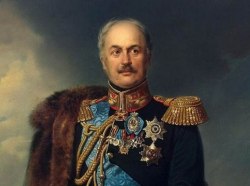Hungarian scientist Attila Turk called the burial of a ninth-century warrior discovered by Pridnestrovian archeologists as discovery of the year. In one of the kurgans on the lands of the Glinoe village of Slobodzeya district, the staff of the Research Laboratory "Archeology" of the T.G. Shevchenko PSU found artifacts from the time of Atelkuza. According to the description of the Byzantine emperor Constantine Bagryanorodny, the territory between the Dniester and Dnieper rivers was called this way, where the ancestors of modern Hungarians, who came to the Northern Black Sea region from beyond the Urals, lived for several decades.
In the tomb there were leaf-shaped iron arrowheads, single-edged ax, dagger, knife, awl, bone lining on the bow and steel.
Arrowheads with intact shafts
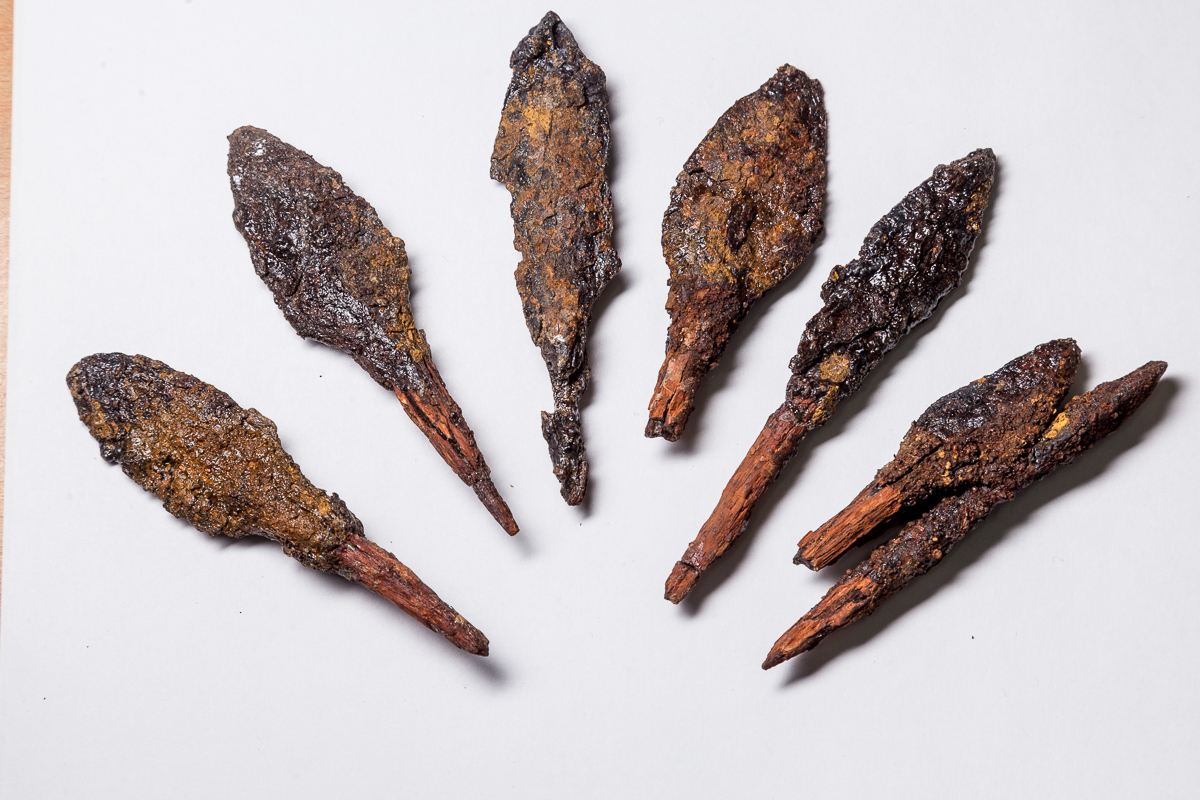
Whereas it turned out there were many gold foil fragments on the bones of the deceased.
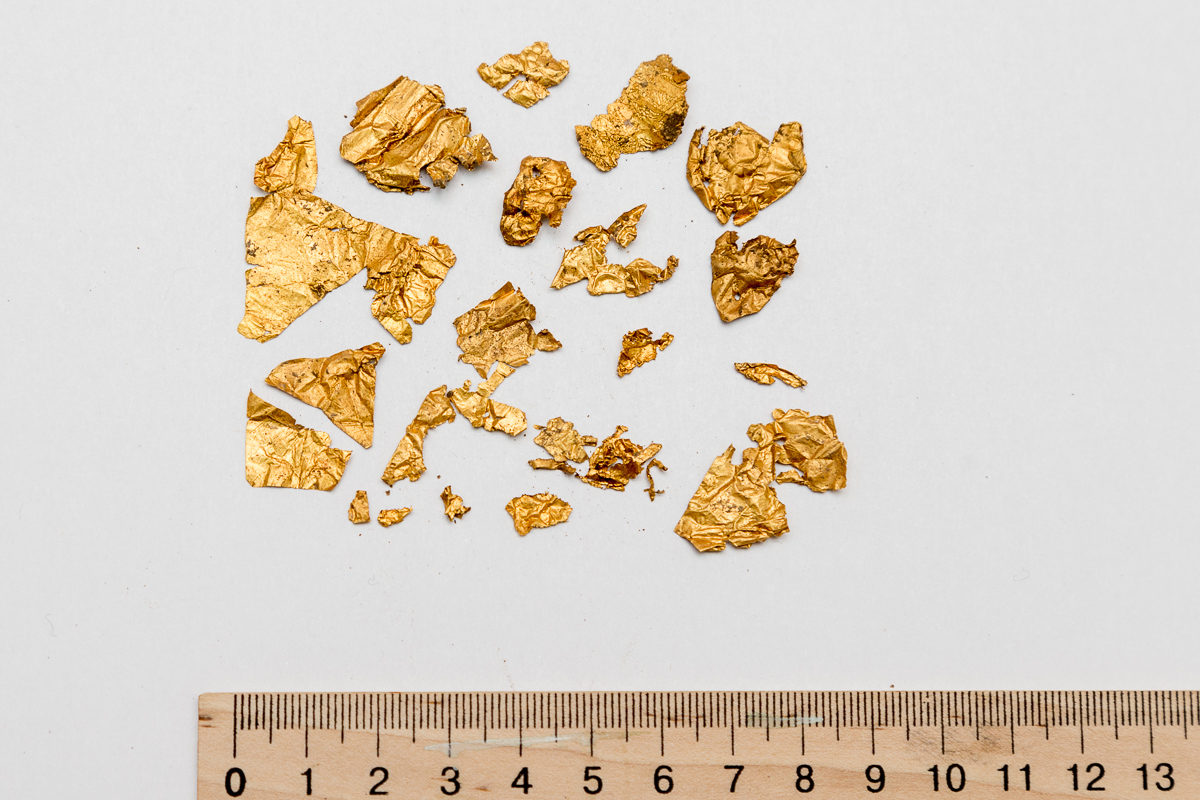
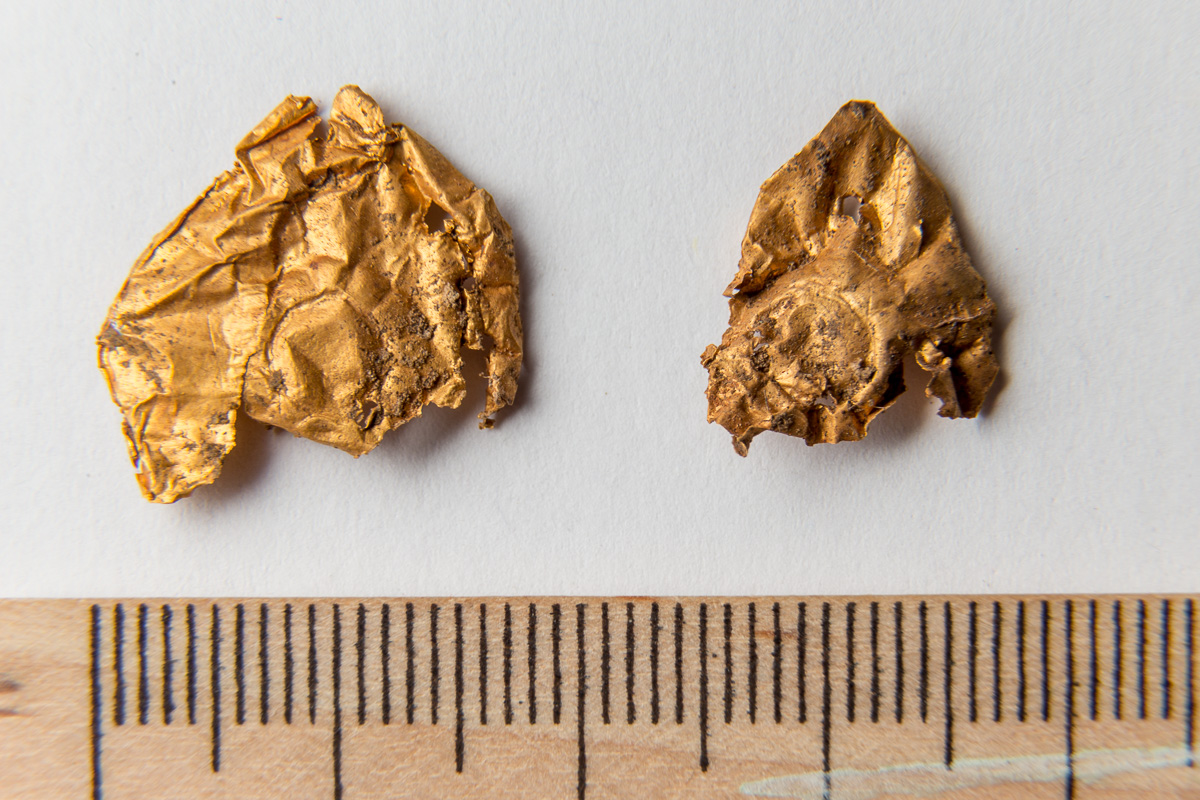
Discoveries` safety leaves much to be desired, because iron had been strongly oxidized for more than a thousand years.
The state of the iron ax after a thousand years in the ground
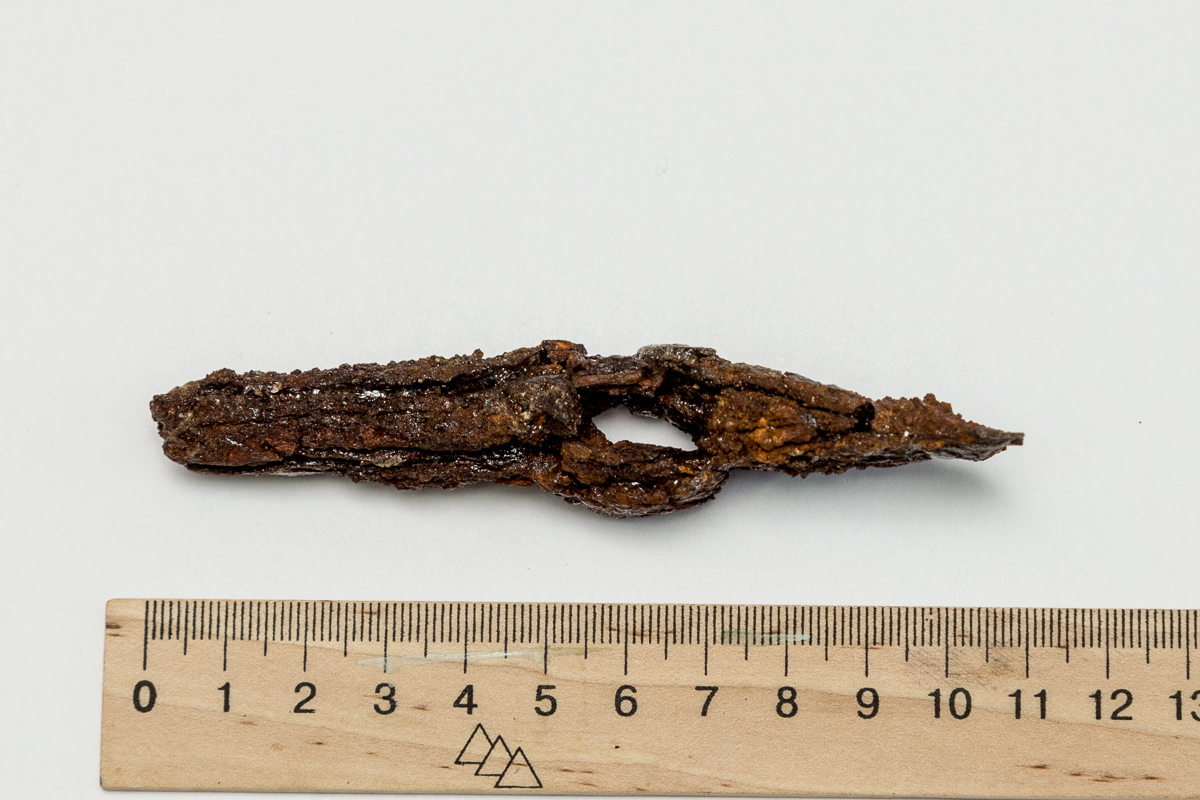
Nevertheless, they caused a genuine delight during scientific conference in Kazan, where Nikolai Telnov, an associate of the Archeology research laboratory, Ph.D. in History, spoke about those artifacts briefly.
“Recently there was a conference devoted to the ancient Hungarians in Kazan, and Nikolai Telnov showed those materials. The colleagues were exited, as this, if you don`t mind me saying, is a sensation!” - Attila Turk, Ph.D. from Peter Pazman Catholic University (Budapest), said to Novosti Pridnestrovya.
The sensation was that there were not so many traces of ancient Hungarians in the Dniester Valley, and this tomb, judging by material evidence, seems to have been built for a warrior from one of the seven Hungarian clans.
“The funeral rite is specific. Gold foil, most likely, was a funeral mask, and such discoveries are found in Hungary and in Urals” - Attila Turk said.
The findings of Pridnestrovian archeologists are confirmed by the data, which are given by Konstantin Porphyrogenitus, the Byzantine emperor and the godfather of the ruler of Russia Princess Olga, in his historical-geographical treatise “On Empire Management”. In the X century, he wrote about how the Hungarians settled in the country of Atelkus after being defeated by the Pechenegs - the Turkic tribes who came from the East. Modern researchers believe that this name is a Greek transcription of the Hungarian word “etelköz”, which can be translated as “interfluve”. Researchers had been arguing about the borders of Atelkuza for a long time, but archaeological artifacts, including those obtained by Pridnestrovian archaeologists, indicate that it was located between the Dniester and the Dnieper.
Fragment of the diorama "Hungarians Arrival" by the Hungarian artist Arpad Festi and his assistants
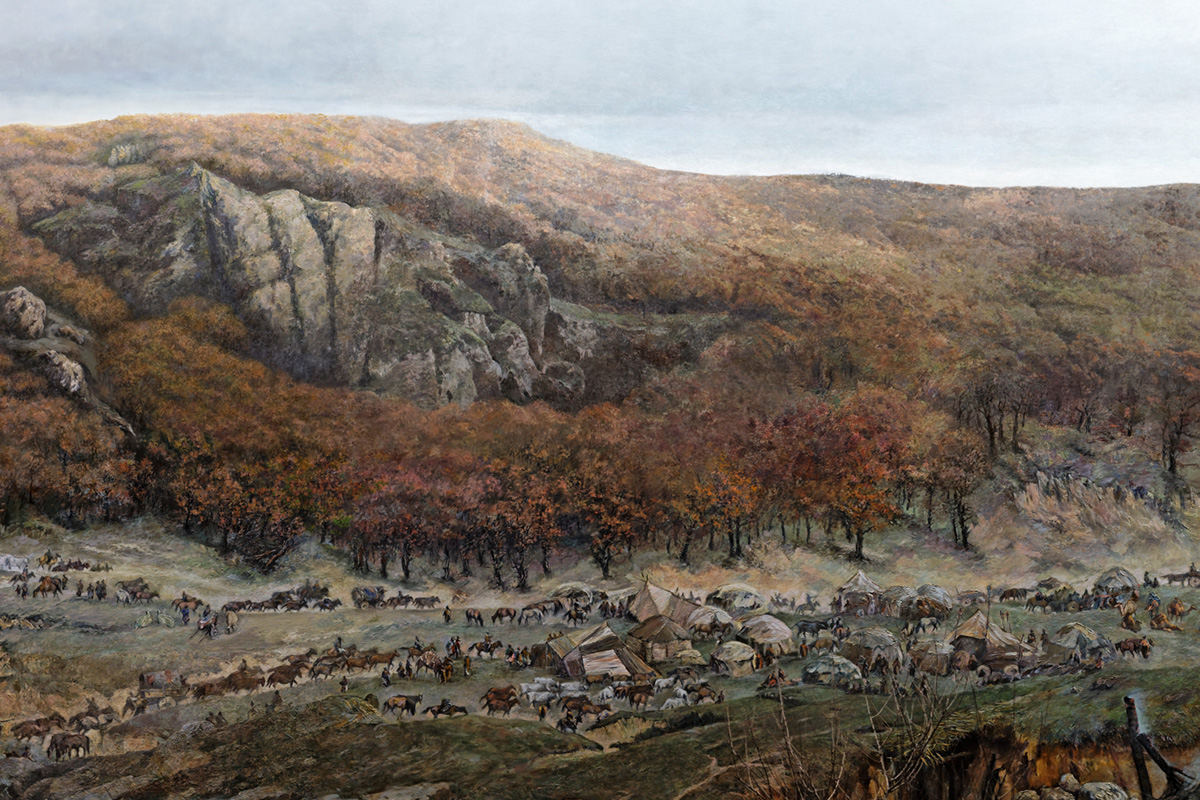
Back in 1994, archaeologist Tatyana Shcherbakova discovered a large burial-ground of medieval nomads around the town of Slobodzei, in the tombs of which there appeared Hungarian belongings. Scientists from scientific centers in Eastern Europe noted, not without envy, that such chance only happens once every fifty years. It was the first detection of traces of ancient Hungarians in the Dniester Valley. Among the finds there are twenty silver belt-shaped plaques - symbols of military valor. According to the researchers, each of them could mean a victory in a combat battle.
Details of the Hungarian Belt Set, IX century
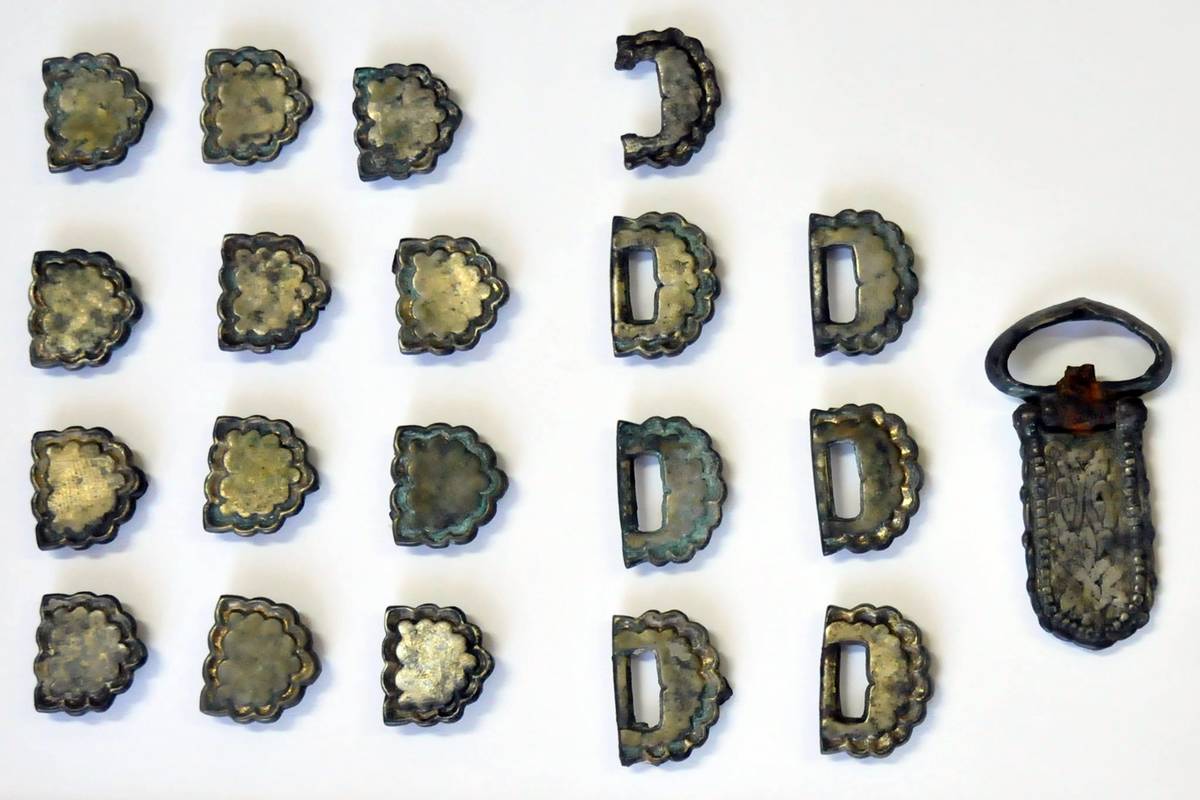
Analyzing written and archaeological data, historians attempt to display a picture of events and learn more about how the Hungarians appeared in Atelkuse and why they went west to the Alfeld valley where their descendants live today.
Today, it is known that the people of “al-majgariya”, as the Hungarians called the medieval Arab geographers, in the IX century controlled the vast expanses of the Northern Black Sea region steppes. The authors of the time wrote that they had powerful light cavalry, the basis of which was horsemen-archers. Perhaps that is why the Hungarians, or Ugrians, as the Old Russian chronicles called them, managed to impose a tribute to the Eastern Slavs.
Fragment of the diorama "Hungarians Arrival" by the Hungarian artist Arpad Festi and his assistants
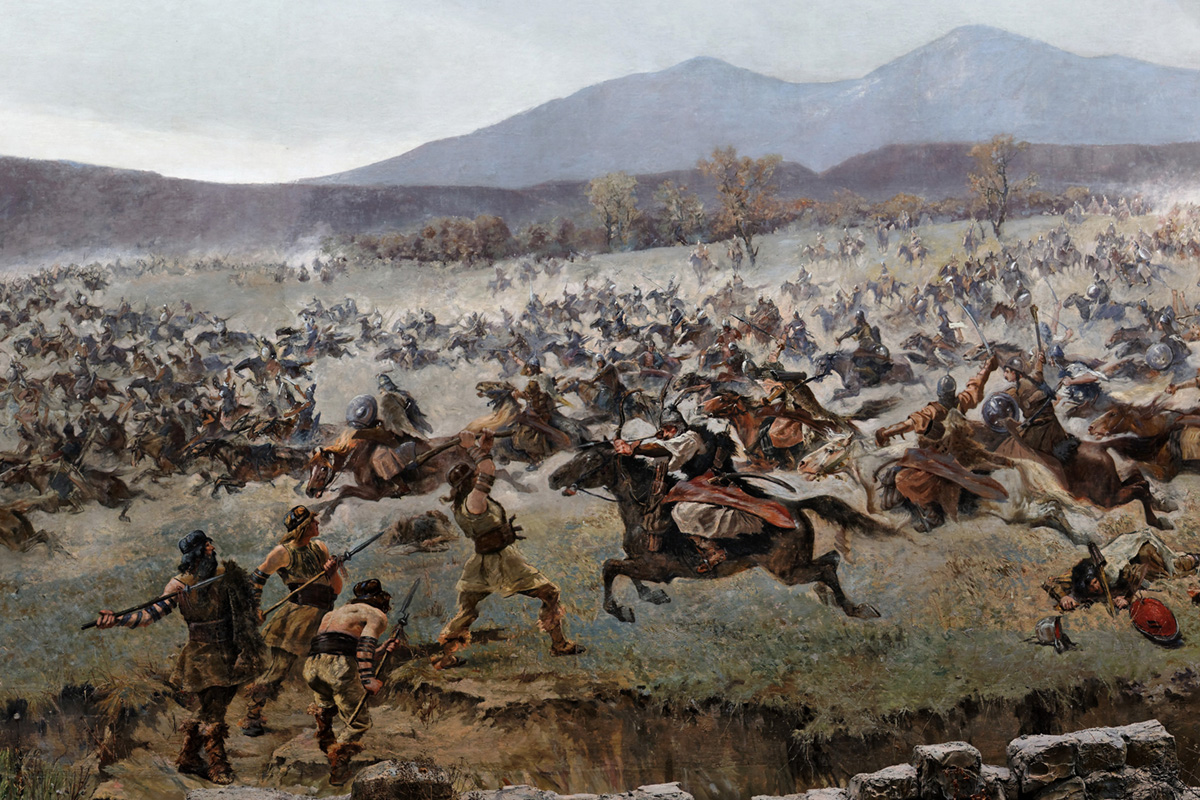
But around the 30s of the IX century Turks-Pechenegs who manage to inflict a number of tangible defeats on the Hungarians, came from the east, after which the “al-Majgaria” clan goes over the Dnieper. From here they lead wars with the Bulgarians, who created their state on the Danube, and continue to resist the pressure of the Pechenegs. At the same time, they are forced to build new relations with Slavic tribes, some of which are united in 882 under the head of Kiev, ruled by Prince Oleg, the Viking and associate of Rurik, the ancestor of the dynasty of Russian kings and the princely aristocracy. In Pridnestrovie, for example, the Hungarians lived in the neighborhood of Tivertsi and Ulichi, and it seems that their relations were, if not friendly, but definitely not hostile.
The historian Nikolai Yurasov even suggested a hypothesis that the Hungarians could help Tivertsi and Ulichi in their war with Kiev, when in 885 Oleg made an attempt to subordinate them. The researcher believes that they managed to repulse the attack of Oleg`s squad not without the support of the Ugrovs al-Madzhgariya.
Fragment of the diorama "Hungarians Arrival" by the Hungarian artist Arpad Festi and his assistants
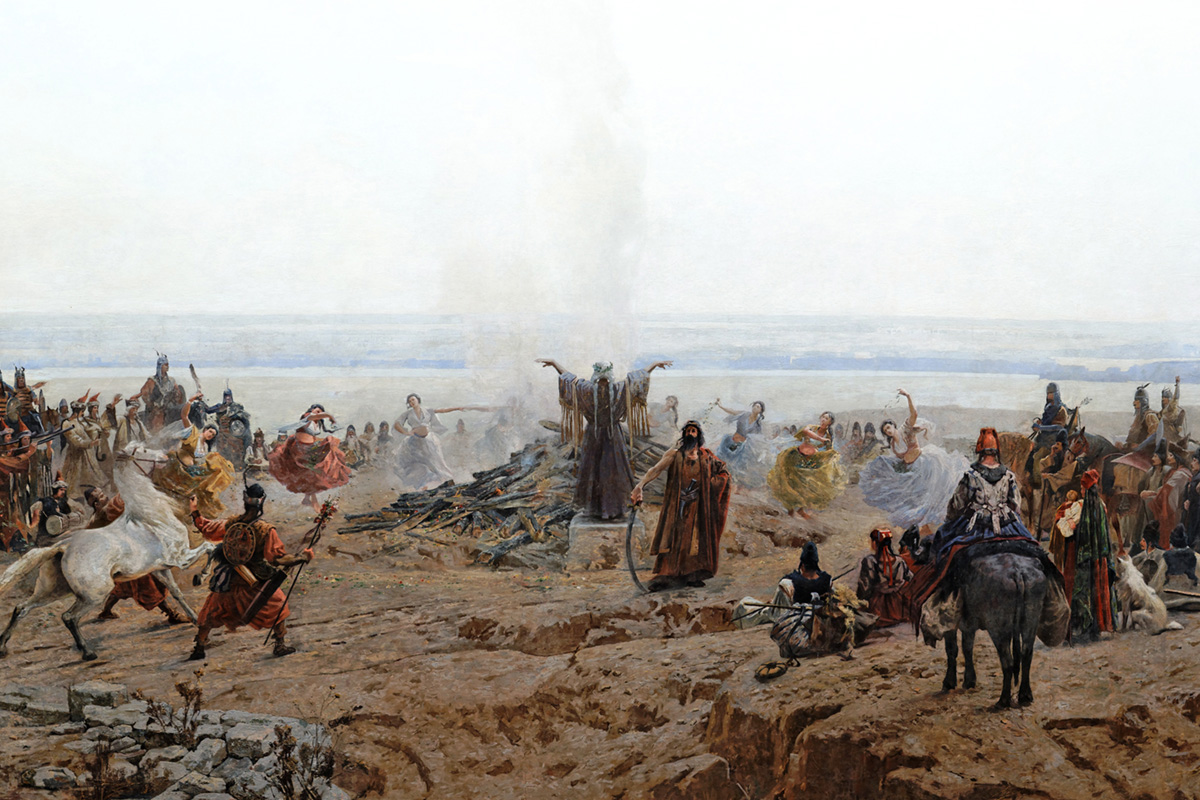
However, in 889 the Hungarians of Atelkuza were again attacked by the Pechenegs, and after a long and hard war, they were again defeated. The Hungarians, who were broken, but retained their fighting efficiency, left the Dniester and the Dnieper valleys to the Carpathian Basin, where, as chroniclers wrote, they found a new homeland. That is how the Ugrians departure and their further fate in the new place are described in the Stories of time years:
“In the year 6406 (898). The Ugrians were walking past Kiev, a mountain that is now called Ugorskaya, they came to the Dnieper and became vezhi: they walked the same way as now Polovtsi do. And, coming from the east, they rushed through the great mountains, which were called the Ugorsky Mountains, and began to fight the Valahians and Slavs who lived there. After all, they had been sitting there before the Slavs, and then the Slavic land was seized by the Valahians. And then the Ugrians chased the Valahians out, inherited that land and settled with the Slavs, conquering them for themselves; and since then the land has been nicknamed Ugorsky. And the Ugric peoples began to fight with the Greeks and built up the land of Thracian and Macedonian all the way to Selun. And they began to fight the Moravians and the Czechs”.
New discoveries of Pridnestrovian archeologists will be another piece of knowledge that sheds light on an era that historians call the “dark ages”. For this, however, it is necessary to conduct a costly examination. To find out the age of the skeletal material, radiocarbon analysis is required, important information can be obtained if genetic and anthropological studies are conducted. Specialists from the Peter Pazman Catholic University (Budapest) and the Adam Mickiewicz University (Poznan), who have been collaborating with the “Archeology” research laboratory, can help with this. But most importantly, the burial of a warrior with Hungarian artifacts, found in Pridnestrovie, allows us to better understand the past of our region, whose history never ceases to amaze.
Alexander Koretsky





